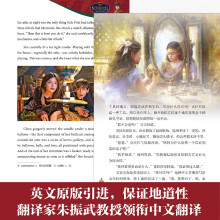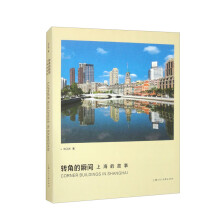










美国浪漫主义作家纳撒尼尔·霍桑长篇代表作,其隐晦的主题思想、超常的表现形式及巧妙的文学艺术手法使其一直成为文学界研究的对象。《红字》不仅涉及当时一个严肃而敏感的婚外情话题,而且还触及到了有争议和激进的女性主义思想,所以,撰写这样的小说是对当时基督教价值判断的颠覆和挑战。
本书为英文原版,经典32开本便于随身携带阅读,精校版忠于原著,同时提供英文朗读免费下载。在品读精彩故事的同时,亦能提升英语阅读水平,进入图书封底博客链接即可进入下载页面。
There could not be a more perfect work of the American imagination than The Scarlet Letter.
- D. H. Lawrence
"It is beautiful, admirable, extraordinary; it has in the highest degree that merit which I have spoken of as the mark of Hawthorne's best things-an indefinable purity and lightness of conception...One can often return to it; it supports familiarity and has the inexhaustible charm and mystery of great works of art."
- Henry James
The Scarlet Letter is a work of historical fiction by American author Nathaniel Hawthorne, published in 1850, and was an instant best-seller. It is also one of the first mass-produced books in America.
Set in Puritan Massachusetts Bay Colony during the years 1642 to 1649, the novel tells the story of Hester Prynne who conceives a daughter through an affair and then struggles to create a new life of repentance and dignity. The book explores themes of legalism, sin, and guilt.
The Scarlet Letter was one of the first mass-produced books in America. It was popular when first published and is considered a classic work today. It inspired numerous film, television, and stage adaptations. Critics have described it as a masterwork and novelist D. H. Lawrence called it a "perfect work of the American imagination".
THE PRISON-DOOR
A throng of bearded men, in sad-colored garments and gray steeple-crowned hats, intermixed with women, some wearing hoods, and others bareheaded, was assembled in front of a wooden edifice, the door of which was heavily timbered with oak, and studded with iron spikes.
The founders of a new colony, whatever Utopia of human virtue and happiness they might originally project, have invariably recognized it among their earliest practical necessities to allot a portion of the virgin soil as a cemetery, and another portion as the site of a prison. In accordance with this rule it may safely be assumed that the forefathers of Boston had built the first prisonhouse somewhere in the vicinity of Cornhill, almost as seasonably as they marked out the first burial-ground, on Isaac Johnson's lot, and round about his grave, which subsequently became the nucleus of all the congregated sepulchres in the old churchyard of King's Chapel. Certain it is that, some fifteen or twenty years after the settlement of the town, the wooden jail was already marked with weather-stains and other indications of age, which gave a yet darker aspect to its beetle-browed and gloomy front. The rust on the ponderous iron-work of its oaken door looked more antique than anything else in the New World. Like all that pertains to crime, it seemed never to have known a youthful era. Before this ugly edifice, and between it and the wheel-track of the street, was a grass-plot, much overgrown with burdock, pigweed, apple-peru, and such unsightly vegetation, which evidently found something congenial in the soil that had so early borne the black flower of civilized society, a prison. But on one side of the portal, and rooted almost at the threshold, was a wild rose-bush, covered, in this month of June, with its delicate gems, which might be imagined to offer their fragrance and fragile beauty to the prisoner as he went in, and to the condemned criminal as he came forth to his doom, in token that the deep heart of Nature could pity and be kind to him.
This rose-bush, by a strange chance, has been kept alive in history; but whether it had merely survived out of the stern old wilderness, so long after the fall of the gigantic pines and oaks that originally overshadowed it,-or whether, as there is fair authority for believing, it had sprung up under the footsteps of the sainted Ann Hutchinson as she entered the prison-door, we shall not take upon us to determine. Finding it so directly on the threshold of our narrative, which is now about to issue from that inauspicious portal, we could hardly do otherwise than pluck one of its flowers, and present it to the reader. It may serve, let us hope, to symbolize some sweet moral blossom that may be found along the track, or relieve the darkening close of a tale of human frailty and sorrow.
INTRODUCTORY /1
Chapter 1 THE PRISON-DOOR /43
Chapter 2 THE MARKET-PLACE /45
Chapter 3 THE RECOGNITION /55
Chapter 4 THE INTERVIEW /65
Chapter 5 HESTER AT HER NEEDLE /72
Chapter 6 PEARL /82
Chapter 7 THE GOVERNOR'S HALL /92
Chapter 8 THE ELF-CHILD AND THE MINISTER /99
Chapter 9 THE LEECH /108
Chapter 10 THE LEECH AND HIS PATIENTS /119
Chapter 11 THE INTERIOR OF A HEART /129
Chapter 12 THE MINISTER'S VIGIL /137
Chapter 13 ANOTHER VIEW OF HESTER /148
Chapter 14 HESTER AND THE PHYSICIAN /157
Chapter 15 HESTER AND PEARL /164
Chapter 16 A FOREST WALK /172
Chapter 17 THE PASTOR AND HIS PARISHIONER /179
Chapter 18 A FLOOD OF SUNSHINE /189
Chapter 19 THE CHILD AT THE BROOK-SIDE /196
Chapter 20 THE MINISTER IN A MAZE /203
Chapter 21 THE NEW ENGLAND HOLIDAY /214
Chapter 22 THE PROCESSION /224
Chapter 23 THE REVELATION OF THE SCARLET LETTER /235
Chapter 24 THE CONCLUSION /244
温馨提示:请使用淄博市图书馆的读者帐号和密码进行登录